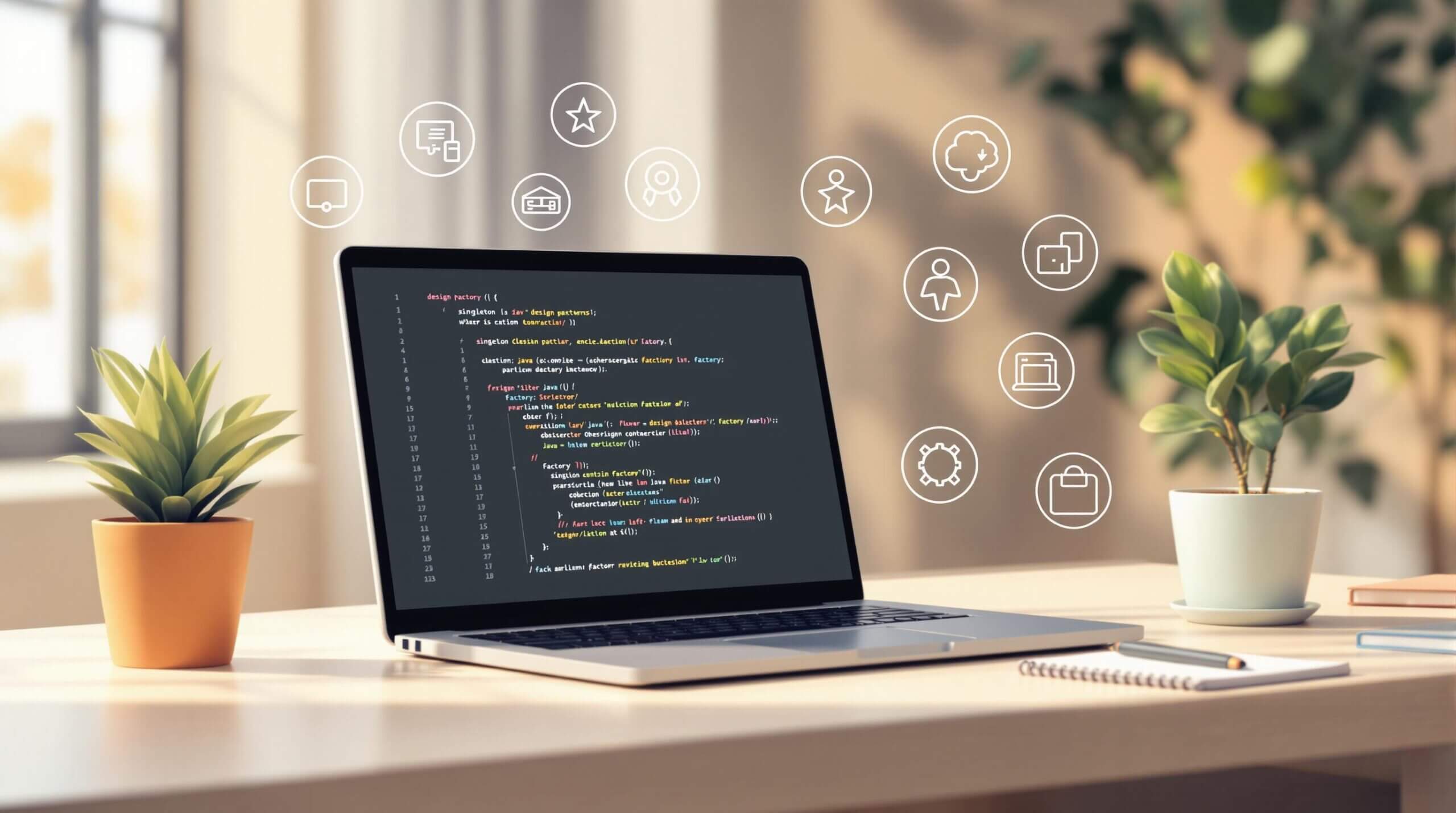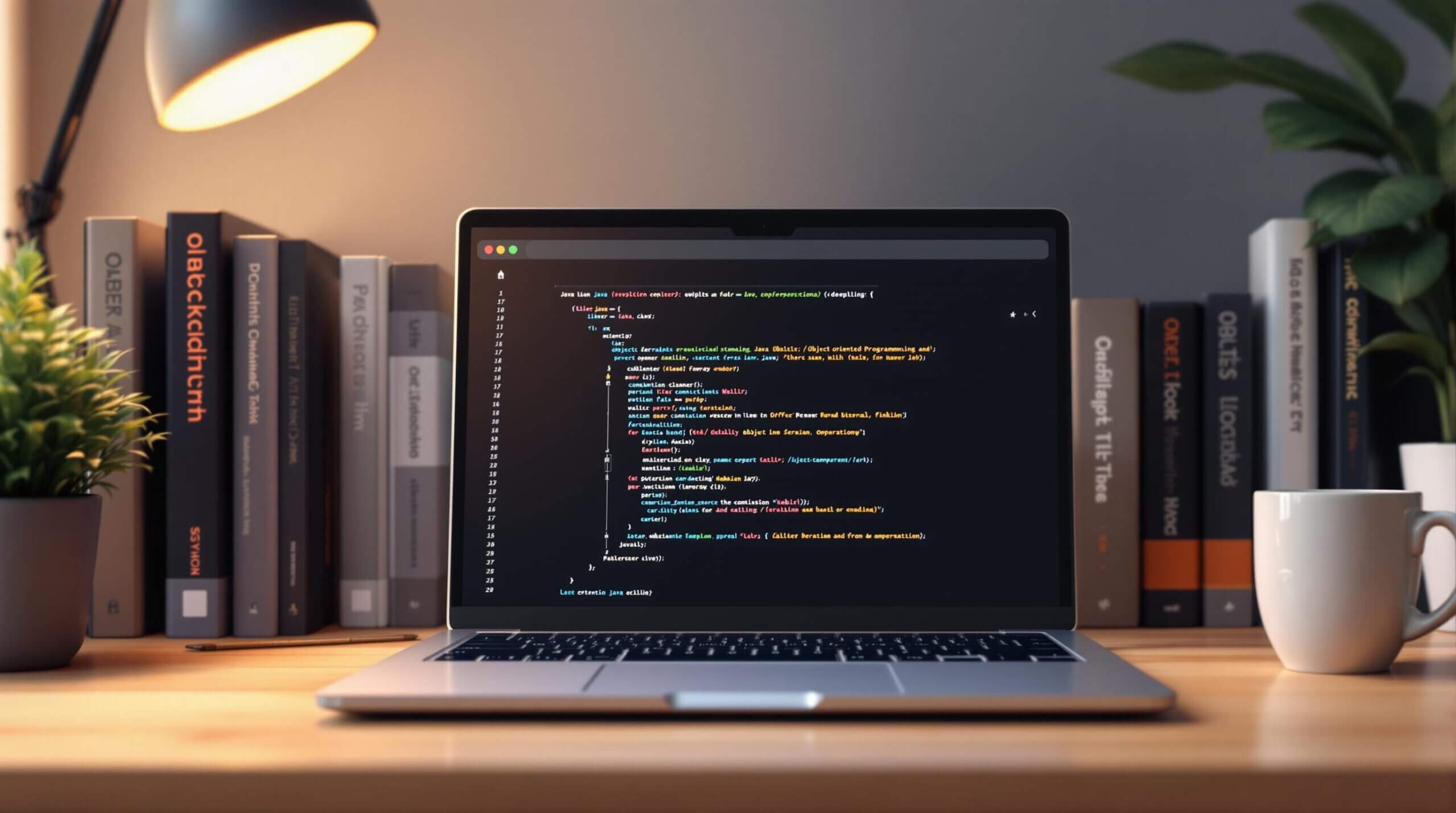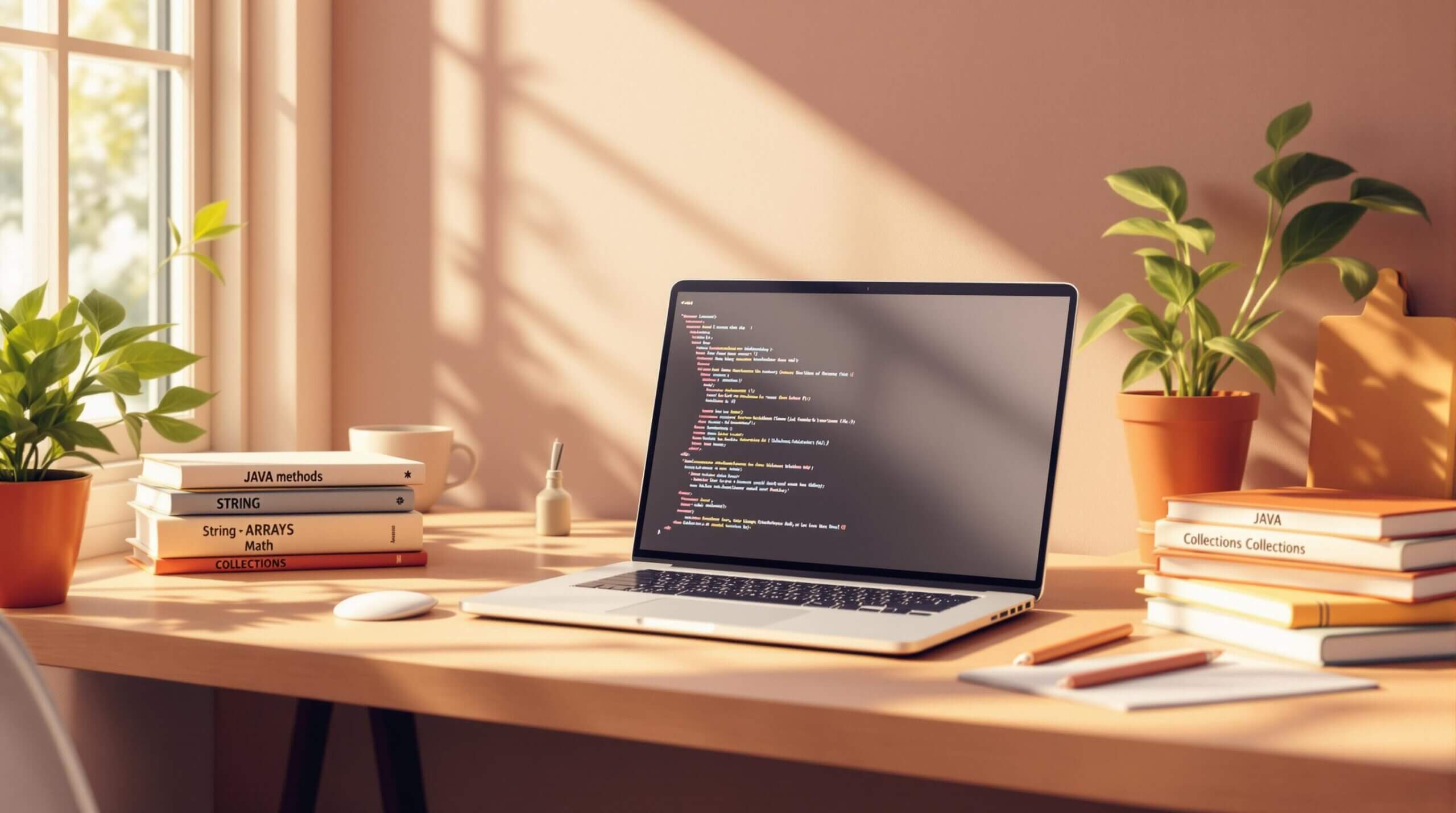Clean Java code is easier to read, debug, and maintain. For beginners, mastering clean coding early can save time and improve collaboration. Here’s a quick overview of key practices:
- Use clear, descriptive names: Follow naming conventions for classes, methods, and variables.
- Keep code simple: Apply principles like DRY (Don’t Repeat Yourself) and KISS (Keep It Simple).
- Organize code well: Use short methods, logical sections, and meaningful comments.
- Leverage tools: Tools like IntelliJ IDEA, Checkstyle, and SonarQube help enforce coding standards.
Quick Tip: Start with small, focused methods and use tools to catch errors early. Clean code isn’t just good practice – it’s essential for long-term success in Java development.
Java Best Practices for Developers: Writing Clean and Concise Code
Best Practices for Writing Clean Java Code
Using Clear and Descriptive Names
Choosing the right names is key to making your Java code easy to read and understand. Stick to standard naming conventions so others can quickly grasp your code’s purpose. Here’s a quick guide:
| Element Type | Naming Style | Example |
|---|---|---|
| Class Names | Use nouns in PascalCase | Employee |
| Method Names | Use verbs in camelCase | calculateSalary() |
| Variables | Be descriptive, use camelCase | employeeName |
| Constants | Use uppercase with underscores | MAX_RETRY_COUNT |
Avoid generic names like en or retrymax, as they can confuse others (and your future self).
Streamlining Your Code
Readable code isn’t just about how it looks – it’s about how easily someone else can understand it. Maxim Shafirov, lead developer of IntelliJ IDEA, highlights that well-formatted code can cut code review time by as much as 30% [3]. Keep these tips in mind:
- Use blank lines to separate logical sections of your code.
- Keep methods short and focused – ideally under 20 lines.
- Write comments that explain why you’re doing something, not just what.
Also, remove dead code like unused imports or unreachable statements. Breaking down large methods into smaller, focused ones aligns with the Single Responsibility Principle (SRP). Here’s a quick example of simplifying code:
// Avoid this:
if (isValid) {
return true;
} else {
return false;
}
// Use this:
return isValid;
Using Tools to Check Code Quality
Leverage modern tools to maintain clean code effortlessly. These tools can enforce standards and catch issues before they become problems:
| Tool | What It Does |
|---|---|
| IntelliJ IDEA | Offers real-time error detection and style recommendations |
| Checkstyle | Helps maintain consistent formatting across teams |
| SonarQube | Detects code smells and potential security risks |
Research shows automated tools can cut down technical debt by 45% [2]. With these in your toolkit, you’ll be well on your way to writing cleaner, more maintainable Java code. Next, let’s dive into advanced techniques to elevate your skills.
Advanced Tips for Writing Better Java Code
Learning the SOLID Principles
SOLID principles are key to crafting software that’s easier to manage and extend. Here’s how you can apply them in your code:
// Example of SOLID principles in action
interface PaymentProcessor {
void processPayment(double amount);
}
interface EmailService {
void sendConfirmation(String recipient);
}
By separating responsibilities, as shown above, you create cleaner and more adaptable code that’s easier to update or expand.
Keeping Code Simple and Avoiding Repetition
The DRY (Don’t Repeat Yourself) and KISS (Keep It Simple, Stupid) principles are essential for writing clean and efficient Java code. Here’s an example:
// Simple and reusable method
public double calculateCircleArea(double radius) {
return Math.PI * radius * radius;
}
Focus on keeping methods concise – under 20-24 lines is a good rule of thumb. Break down complex tasks into smaller, focused methods for better readability and fewer bugs.
Basics of Java Memory Management
Efficient memory management is critical for smooth-running applications. Here are some key practices to keep in mind:
-
Resource Management
Use try-with-resources for automatic cleanup of resources like file streams:try (FileInputStream fis = new FileInputStream("file.txt")) { // Perform file operations } catch (IOException e) { // Handle exceptions } -
Object References
Avoid holding onto object references you no longer need. This allows the garbage collector to free up memory, keeping your application efficient.
These techniques not only improve your code’s performance but also make it easier to maintain in the long run.
sbb-itb-f454395
Practical Examples and Common Errors
Examples of Clean Java Code
Here’s an example of how clean coding principles can be applied effectively:
public class Employee {
private final String employeeName;
private final String employeeId;
public Employee(String name, String id) {
this.employeeName = name;
this.employeeId = id;
}
public String getEmployeeName() {
return employeeName;
}
public String getEmployeeId() {
return employeeId;
}
}
This class highlights the use of clear constructors, encapsulation, and immutability. The parameters are properly validated and assigned, making the code easy to understand and less prone to errors.
For larger systems, structuring objects correctly is key:
public class Order {
private final CustomerDetails customer;
private final PaymentInfo payment;
public void process() {
// Processing logic
}
}
This example shows how to organize complex relationships without cluttering the code, keeping it readable and manageable.
Mistakes Beginners Often Make
Here are some common errors and how to fix them:
1. Poor Exception Handling
Avoid generic or unhelpful exceptions that make debugging harder.
// Better: Use specific exceptions and clear logging
try {
// Code
} catch (IOException e) {
throw new CustomException("Error processing file", e);
}
2. Memory Management Issues
Improper handling of resources, like event listeners, can lead to memory leaks.
// Common mistake: Not cleaning up event listeners
button.addActionListener(new ActionListener() {
public void actionPerformed(ActionEvent e) {
// Listener logic that causes leaks
}
});
// Better: Use weak references or cleanup mechanisms
button.addActionListener(new WeakReferenceListener(() -> {
// Action logic
}));
3. Poor Code Organization
Mixing responsibilities in one class makes maintenance difficult. Instead, divide responsibilities:
// Better: Split responsibilities into dedicated interfaces
public interface PaymentProcessor {
void processPayment(Payment payment);
}
public interface NotificationService {
void notifyCustomer(Customer customer);
}
Using tools like IntelliJ IDEA and Checkstyle can help identify these issues automatically [2]. Regular code reviews are also a great way to catch and correct these patterns early.
Summary and Resources for Further Learning
Key Takeaways from This Guide
Organizing your code well and following consistent naming conventions are the building blocks of clean code. The SOLID principles – Single Responsibility, Open-Closed, Liskov Substitution, Interface Segregation, and Dependency Inversion – are essential for creating code that is both maintainable and scalable [2]. Pairing these principles with Test-Driven Development (TDD) helps ensure your code is dependable and easy to work with.
With these basics in mind, you can now explore additional resources to expand your knowledge and sharpen your skills.
Where to Learn More About Java
To continue improving your Java skills and clean coding techniques, check out these resources:
| Resource Type | Platform | Focus Area |
|---|---|---|
| Online Training | KodNest | Practical Java development with career support |
| Technical Documentation | Javatpoint | Java conventions and core concepts [1] |
| Community Learning | Dev.to | Code quality tips and best practices [4] |
| Professional Development | Stack Overflow | Problem-solving and code review |
For a deeper dive, consider reading "Clean Code: A Handbook of Agile Software Craftsmanship" by Robert C. Martin. Strengthen your skills further by engaging in activities like code reviews, tackling coding challenges, and contributing to open-source projects.
"Clean coding practices enhance Java application performance and maintainability. Clean code simplifies understanding, modification, and maintenance."
Here are some ways to continue growing as a developer:
- Regularly reviewing your code
- Writing unit tests for your projects
- Joining coding challenges
- Collaborating on open-source projects
- Staying informed about the latest in Java development trends
FAQs
What is the coding standards tool in Java?
Using tools to enforce coding standards can make maintaining clean, high-quality Java code much easier. Popular options include Checkstyle, Spotbugs, and PMD Java. These tools help ensure consistent formatting, catch bugs early, and spot performance problems.
| Tool | Primary Function | Key Features |
|---|---|---|
| Checkstyle | Code style enforcement | Custom rules for indentation, naming, and formatting |
| Spotbugs | Bug detection | Identifies common bugs and performance issues |
| PMD Java | Code analysis | Detects dead code and duplicate code |
For instance, Checkstyle can integrate directly with your IDE to flag issues like inconsistent indentation or naming violations as you write code. These tools work hand-in-hand with clean coding practices, offering automated checks that help maintain quality.
To get started, set these tools to run during your build process to ensure consistent code quality. You can use default rule sets initially and customize them to fit your project’s needs. Many tools, including these, integrate seamlessly with build systems like Maven or Gradle, allowing you to catch issues early – before they make it to production.





